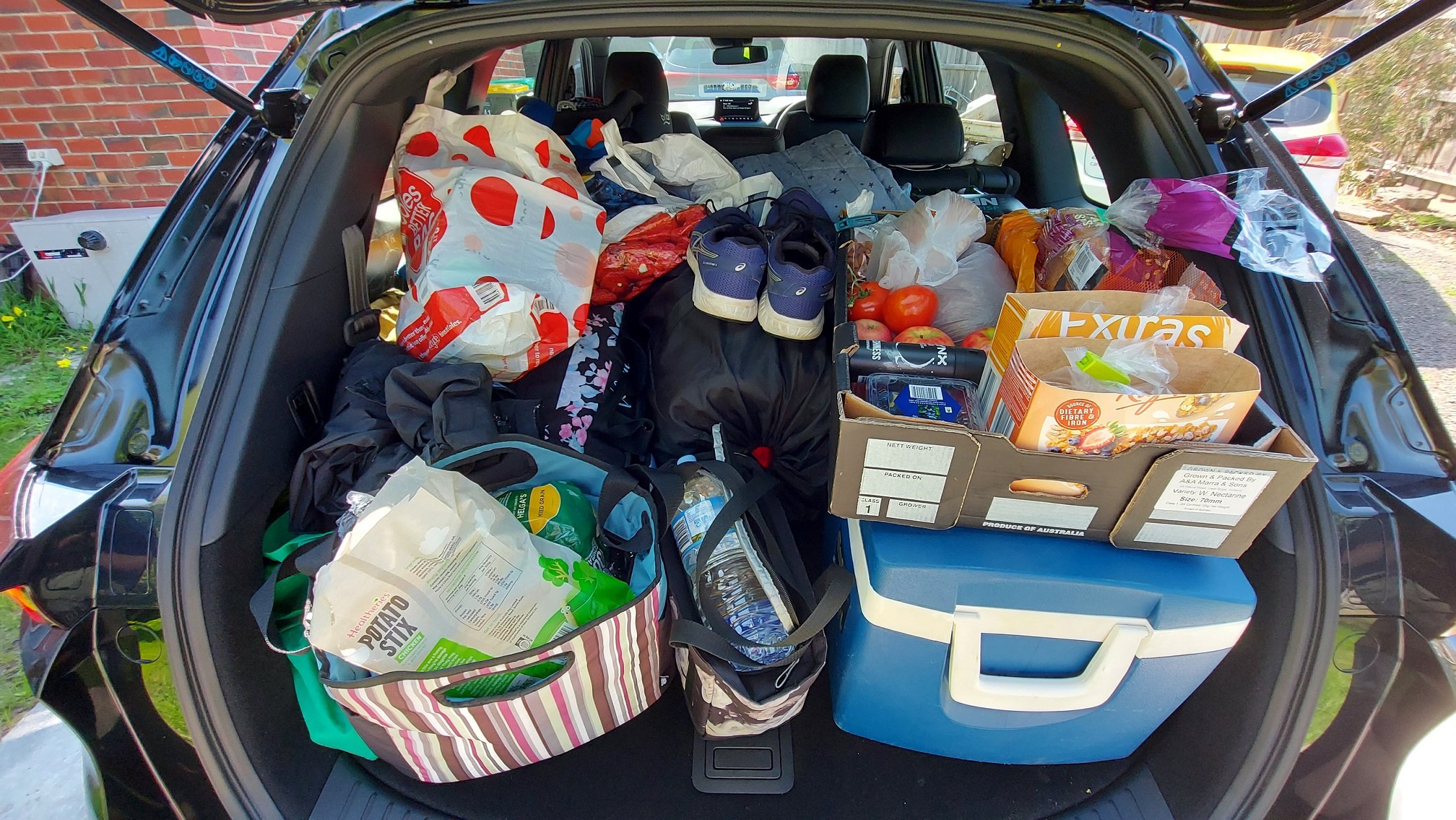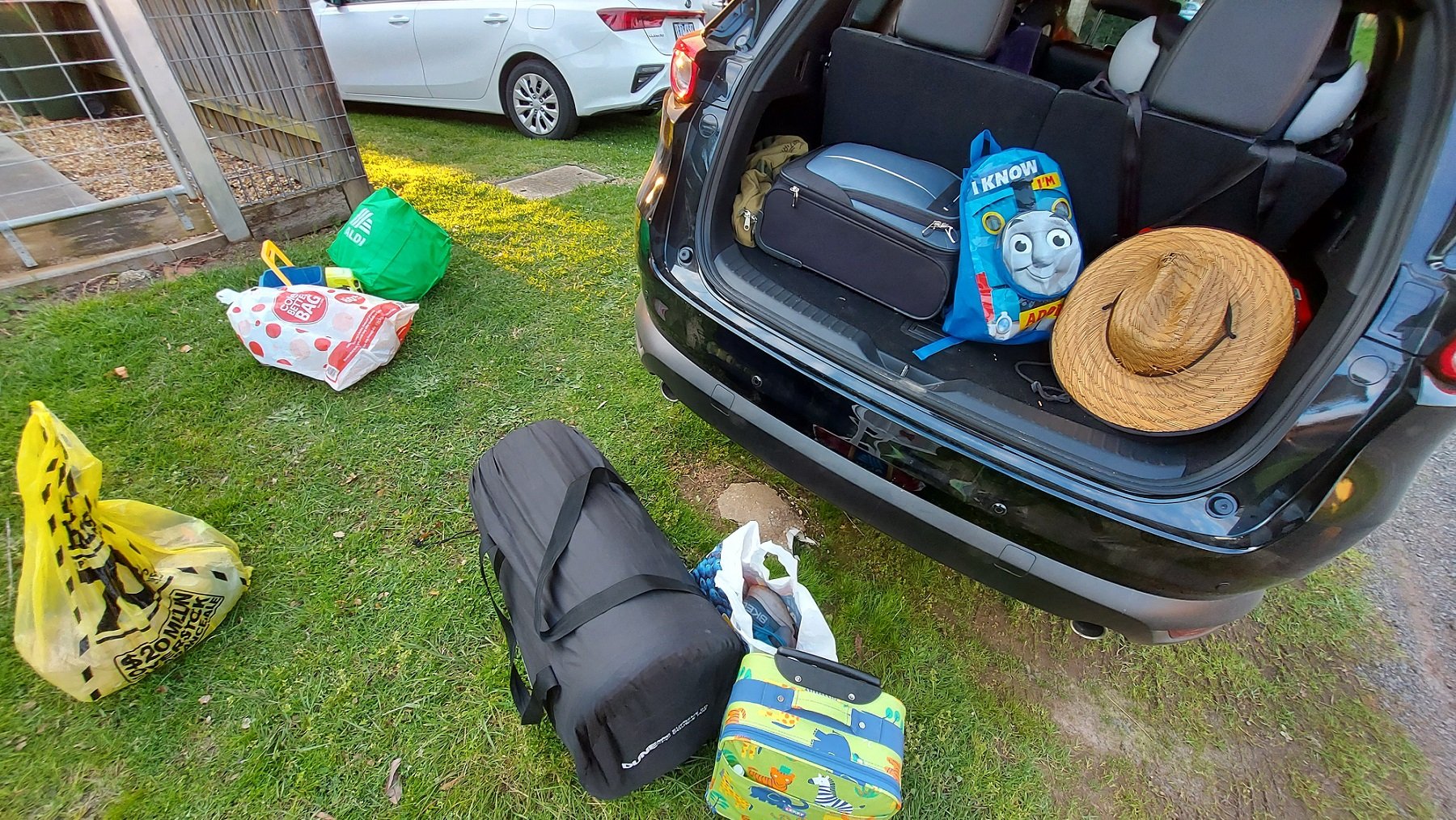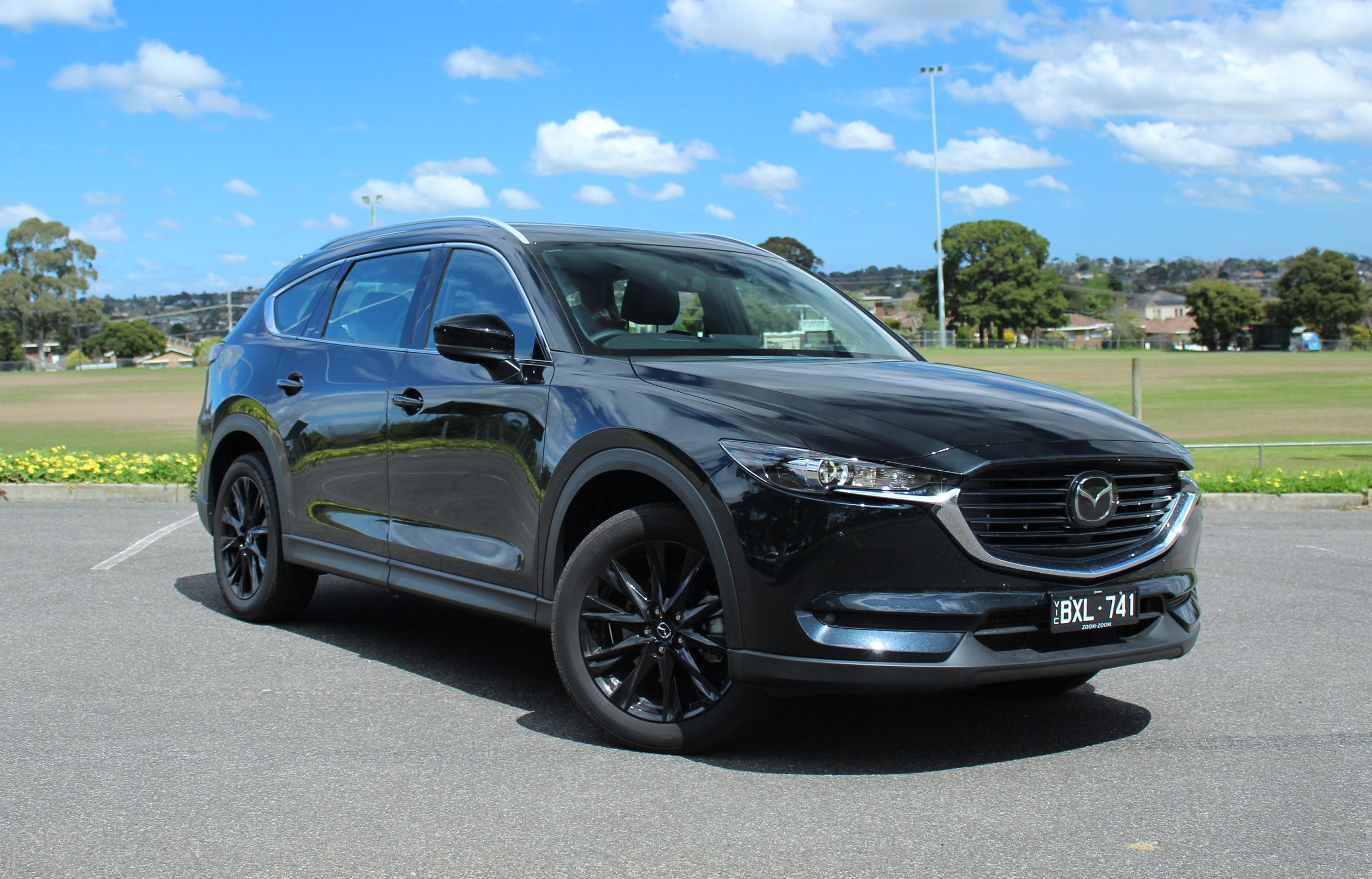Mazda CX-8 used review and buying guide
The Mazda CX-8 is a large, 7-seat SUV with high-quality interior and a seriously good price without a cost compromise on prestige worth of a German SUV. Here’s why it’s probably better than the CX-9…
SUVs are the most popular new car category in Australia, sure. Big seven-seat SUVs are also an obvious choice for big families or medium-size ones occasionally picking up additional kids who happen to befriend yours, or taking your parents to weddings.
But why? There are good reasons why a Mazda 6 wagon beats an SUV.
It’s so convenient being able to whip out two extra seats at a moment’s notice, but Mazda already has the CX-9, so why does the Mazda CX-8 exist? Is it just a cynical marketing opportunity, or is there method behind the money-making?
When the CX-8 first arrived back in 2018, I didn’t understand the point of it. Trying to think like Mazda, I was asking ‘why cram another SUV into your product range, especialy one that’s going to cannibalise CX-9 sales?’ I didn’t think we needed something between the CX-9 and CX-5 simply to compete with the likes of Mitsubishi Outlander, Hyundai Santa Fe, Kia Sorento or Toyota Kluger. Why do we need a smaller CX-9 when it’s already excellent?
Strange too that Mazda put its 2.2 diesel engine into the smaller CX-8 and not into the bigger CX-9 where that engine would be better suited to moving that heavier vehicle and would make it an absolute weapon for big-family holiday roadtrips.
This is where I’m going to help you make an objective decision to buy the CX-8 that best suits your potential usage case. Starting with how much this this costs.
Front-wheel drive CX-8 is cheaper than the equivalent all-wheel drive: so it’s $45,000 for base model ‘Sport’, and hits as much as $65,700 for top-spec Asaki.
In all-wheel drive, ‘Sport’ is a serious $7000 jump to $52,400 just because you’re adding rear-wheel drive. The Asaki AWD is a whopping $73,000 spend before coughing up another $2700 to get the Asaki LE that gets the sexy caramel Nappa leather and captains chairs (see below). Let’s be frank here, the CX-8 is not cheap when you compare it with other mainstream rivals.
But if you’re shopping for a lower-tier luxury German SUV or maybe a Lexus, then you should consider the tens of thousands you could save buying a fully decked out CX-8 instead of a poverty pack Beemer, barge Benz or shitbox Audi.
So how do you intend to use the CX-8? Does your mob take extended roadtrips between home and some moderately far location? Do you do a lot of freeway commuting to and from work on a fairly regular basis? Are you a sales rep or some kind of frequenter of semi-rural or regional roads for vocational purposes? Maybe you run a small business which requires some occasional light towing, people moving and supplies carting between offices and clients.
If you answer yes to many, any or all of these propositions - I strongly encourage you to consider the CX-8 diesel over the CX-9 in petrol-only form. Any prudent financial decision has to be made on a long-term analytical basis here. So don’t concern yourself with short-term fuel price discrepancy between petrol and diesel, because when prices return to quasi-normal, you do not want to be stuck with the inferior powertrain that will cost you more by filling up 25-30 per cent more often.
We’ll get to that below. For now, let’s look at the practicality backbone of CX-8, because it is certainly ripped in that regard.
THE BUSINESS END
At this point in life, you probable have one, two or three kids of varying ages. If you’re on three with the likelihood of considering a fourth, you need to immediately open another tab in your browser and start looking at the Kia Carnival: the best people mover on sale right now >>. Because that’s ultimately what you’re going to be doing with four kids - moving them around, a lot. Every trip to the airport, every school day for the next five to 10 years, every camping holiday, every sports game, every graduation, every birthday, every time they decide to have friends over for the weekend - you need the best damn tool for the job.
Put it this way, the Australian Army doesn’t use multiple small helicopters to move cargo, medical personnel and troops to provide aid and relief in some far-off disaster zone. They use a fricken Chinook. Seven-seat SUVs are compromised when it comes to all hands on deck + cargo. Because that’s their nature: you want the option of either - meaning you can’t have both.
With row three up, you can fit some gear in there, but don’t expect the full gamut of child raising megastructures to fit back there - stroller or pram, sure. Double pram, porta-cot, the shopping and Kid #2’s sports bag? Unlikely. But with row three down, absolutely it will all fit.
Interestingly, Mazda doesn’t actually say how many litres CX-8 can hold when rows two and three are collapsed
Unlike a Kia Sorento, there’s no ISOFIX points in row three of the CX-8, but there are two top tethers. But CX-8 does get third-row head-protecting curtain airbags, so anybody who does use those seats and is unfortunate enough to be involved in a serious-enough crash, will get that basic life-saving feature. This is not the case for Kia Sorento, Hyundai Santa Fe or Mitsubishi Outlander where third-row use is intermittent and infrequent. How often you are going to use row three’s seats six and seven is a factor only you can make a decision on.
Happily, unlike the Outlander’s row-three legroom bad joke, CX-8 has plenty enough for most regular size humans, on par with Santa Fe and Sorento, the CX-9 and Kluger.
CX-8 has a boot capable of inhaling 775 litres with row three down, or 209 litres with it up. But what does that mean to you in the real world? It means you need to whip out a tape measure and figure out how wide your most common high-usage boot items are, and then compare that with the boot of an actual CX-8 at the dealership.
If your budget is fully elasticised, a $75,000 pricetag will get you the top-shelf all-wheel drive CX-8 Asaki LE.
This gives you the choice of rich light brown or cream white Nappa leather seats in all three rows, plus two second-row captains chairs either side of a dual-lid centre console with cup holders.
Thing is, you have to look at this from an objective point of view, because those sultry seats and the flippy-top centre console are not exactly the best value. A penultimate CX-8 Asaki diesel wants $73,000 driveaway, which includes a 360-degree camera, cooled/ventilated seats - but the Kia Sorento GT-Line (also in diesel form) is $69,000 driveaway. Is the Mazda $4000 better? Keep reading…
Let’s take a look at exactly how the mid-size CX-5 compares with the plus-size models, starting with the wheelbase, because that gives you a guide as to how much legroom you’ll get. Then we’ll do boot space, weight and overall size.
CX-5 has a 2.7 metre wheelbase, CX-8 has 2.93 metres, which is the same as CX-9 because they’re basically the same vehicle platform underneath, just with a 107mm difference in overall body length.
But CX-5 is such a complete vehicle, thanks to offering the same 2.2 diesel engine as CX-8 - or the firecracker 2.5 turbo-petrol - without the oftentimes weight liability of an additional row three up the back. So CX-5 goes better, drive much nicer and still covers most bases when it comes to loading it up with family stuff. You literally get the same power outputs from the diesel, but a 248kg weight advantage to the five-seat CX-5.
So be sure you actually need seven seats, because not only could they sit there unused, but they will also be costing you money in fuel if they’re never utilised. In fact, it’s a five per cent difference in fuel consumption between CX-5 and CX-8 diesels, just owing to the row-three seats; that’s 5.7L/100km vs 6L/100km. Having said that, at least you’re not getting the 8.3 litres of the 2.5 turbo-petrol CX-5.
In terms of boot space, CX-5 gets 1050mm between the wheelarches, and 950mm of length from the bottom of the raked-rearward backseat, before becoming 730mm from the top of the seatback to where the tailgate will ultimately close. CX-8 on the other hand, has more. Easily over a metre along the floor to the seatback back of row two, and there’s a difference of three millimetres in space between respective sets of wheelarches - call it a draw.
Check out Measuring Cargo Volume >> to learn more about how carmakers size-up how much you can fit into a Mazda CX-8.
And all three have the cursed surprise of a space-saver spare wheel waiting for you under the boot floor, because that’s how Mazda rolls.




The CX-s is a fairly big vehicle, but mostly in terms of is proportions relative to the driver. There’s a lot of real estate between the driver and the end of the bonnet where it meets the front nose section. And at the rear, the tailgate is rather heavy if it’s not powered in models up from the GT.
When you do get that rear bank vault door open, you get a massive cargo space - 1.27 metres of length along the floor to the bottom of the backseat. That’s impressive. Width between the wheelarches is 1.01 metres, so a difference of -4mm in favour of the CX-5.
But CX-9 holds 810 litres with row three down, where the CX-8 can still manage 775L - that’s a five per cent difference in cargo volume, but the CX-8 is 11 per cent cheaper (Asaki to Azami). A CX-9 GT is asking $70,000 driveaway (with fruit like the premium Bose sound system, sunroof and big 10-inch infotainment screen), while CX-8 with only five per cent less cargo volume and the same number of seats is about the same price in a top-spec Asaki - with all the toys, not just a few of them.
In layman’s terms, CX-8 is slightly less total vehicle, but a better vehicle, for a large amount less money. It’s better value.
In this critical area, I’d suggest a top-spec CX-8 is the superior value proposition over a mid-spec CX-9 or a compromised family hauler in the CX-5. Not to mention, CX-5 in its current form is not long for this world because a new version is supposed to be coming around mid-2023. The current ‘generation’ of CX-5 has been on the go since 2015 and while it’s been one of the best-selling vehicles in the country for a sizeable chunk of that time, it is aging rapidly.
ENGINES AND DRIVELINE
It should be a pretty easy choice in powertrain for the CX-8 because you essentially get two types. Either the diesel/AWD option, or the petrol/front-drive.
The 2.5 turbo-petrol is a powerhouse in CX-9, but it’s a bit brutal when it comes to the task of smooth, linear throttle inputs for situations like towing and generally sitting at cruising revs for long periods.
See, normal hatchbacks, small SUVs, sedans - they all work just fine as petrol-powered vehicles. But when you need to move a larger vehicle, potentially full of your family, and a fortnight’s worth of holiday cargo, maybe even with a modest trailer attached behind, petrol is not the right fuel.
On a per unit basis, diesel contains about 30 per cent more potential energy than the same pint, schooner or tank of petrol. To demonstrate this, let’s use a reverse-engineering hack to figure out exactly how efficient Mazda’s four-cylinder ‘SkyActiv’ 2.2-litre diesel engine is compared with the bonkers 2.5 turbo-petrol four-cylinder in the CX-9.
Diesel is king in this domain. And don’t worry about the price of diesel - Australia has among the cheapest fuel prices in the developed world - and diesel fuel isn’t going away because we use 10 billion litres every year, every single truck relies on it, and diesel makes less CO2 than petrol. Diesel is the best we’ve got right now and it’s only got a bad wrap because of Dieselgate.
In combined cycle laboratory bench testing, the CX-8’s 2.2 diesel returns a healthy 6 litres per 100km, drawing from a 74-litre tank. That’s a big tank, too. Good for regional holiday travel.
You’ll be glad you bought the diesel over the CX-9 too, because the latter uses 9 litres per 100km/h. So you’ll be using, on average, about 30 per cent less fuel by getting the diesel. There’s that 30 per cent fuel energy efficiency we mentioned earlier - similar performance, similar engines, similar weight - but diesel wins.
Having said that, the diesel/AWD powertrain is more expensive than the petrol/FWD, so if you’re on a tight budget - honestly, the petrol is gonna be fine. And all-wheel drive isn’t strictly necessary in mundane ordinary driving - school drop-offs, commuting to work, regional visits to major towns where the road is entirely sealed.
You really only need AWD in certain conditions with consistent demand: Should you buy an all-wheel drive family car?_
SAFETY
Safety in modern large, expensive SUVs is hard to ignore. You basically get everything you should need in a mid-spec anything, generally speaking. The jury is still out on driver assist features like lane-keeping and steering assistance-type features; if you specifically need these kinds of features, there’s some personal skill development needed. But if you want these features as a ‘just in case’ scenario, then let’s see what you get in a mid-range CX-8 such as below.
Even at $45K, the CX-8 Sport base model gets:
Radar cruise control
Auto emergency braking
Blindspot monitoring
Driver attention warning
Rear parking sensors + reversing camera
Forward collision warning
Lane keeping/departure warning (just in case you don’t know how to steer)
Rear cross-traffic alert
Tyre pressure monitoring (which wasn’t available on the 2018 model when rated by ANCAP)
Auto high-beam dipping and LED foglamps
Auto rain-sensing wipers
Adaptive/radar cruise control and auto emergency braking are the key features you should actually want because they actively make sure you avoid a crash. Radar cruise tries to keep you from getting into a bad situation by increasing your distance (and therefore time) to respond to unfolding events. Then auto emergency braking (with various stupid names from different brands, annoyingly) does its level best to engage the vehicle’s braking system to its fullest potential to stop you having a crash, or reducing the severity of one if it cannot be avoided.
It’s pretty awesome these two features are available on such an affordable model grade like CX-8 Sport.
Step up to the ‘Touring’ and you add front parking sensors and LED foglamps, then on the ‘GT’ you essentially get nothing more in terms of safety additions, to be honest. The 360-degree camera is only on the Asaki.
ANCAP doesn’t test seats six and seven, so it’s hard to judge objectively which seven-seat SUV has the best row-three crash survivability back there, but happily there is a curtain airbag on each side of row three.
One safety aspect Mazda needs to reassess, arguably, is the use of the term ‘safety feature’ in reference to the convex wide-angle left-hand door mirror. It depends on how you might consider it, but I’d suggest a wide-angle door mirror can actually be counter-productive because when you’re driving you need information, but only the most relevant.
There’s already a lot going on in a modern vehicle. You’ve got an array of information coming at your from the driver’s display, the heads-up display (perhaps), you’ve got two other mirrors feeding you information about Charlies to your six and your 3-4-and-5 o’clock, you’ve got an infotainment screen trying to distract you long enough to have a crash, and then there’s the traffic forward of you out the windscreen while the kids and dearly beloved do their best to occupy your brain’s frontal lobe.
But the passenger side door mirror has one job: to tell you what’s at 8 and 9 o’clock. But you need relevant information. You don’t need to know every single vehicle and thing in that direction. You just need to know what applies to you immediately, because you only have a one or maybe two second glance in which to gather that data. Mazda’s wide-angle lens might be trying to feed you too much sky, emergency lane, left lane and distant vehicle info not immediately pertinent to simply changing lanes. Evaluate this for yourself when you go for a test drive.
MITSUBISHI vs MAZDA
The CX-8 is closest on paper to the Mitsubishi Outlander because they’re both pretending to be bigger seven-seat SUVs, when they’re more like mid-size SUVs with a tokenistic row three thrown in as a way to lure buyers of normal five-seaters. And it’s a very good idea, because sometimes you just need the large boot space, but only rarely need those extra seats - but knowing they’re there in a pinch is good.
Unless, of course, you don’t want to be in the position of having to transport other families’ kids home - that’s understandable. Been there, got the fridge magnet.
Adding two additional seats to a five-seat SUV means additional weight, but it also cuts luggage space drastically, while also providing compromised passenger comfort for anybody using them.
Adults cannot fit in row three of an Outlander. It’s just not viable. But CX-8 is marginally better. However, the problem here is that both these vehicles’ third row is only gonna be functional for a certain age group of young kids who are no longer in restraints, but who are only just hitting puberty, whereby it won’t be long until they outgrow the space back there.
This is something you need to factor in. I’d suggest if you’re gonna get 5-10 years out of a CX-8, and row three intends to be used often, consider what is happening in row two, because your growing kids will need more room sooner or later. So, are there child restraints in row two that will be in the way of your pre-teen/s? What kind of holidays are you gonna take, where you’re gonna be loading up with bags? Is there a second vehicle which is going to play into how you use either the CX-8 or consider the Outlander?
As far as legroom on long-distance drives is concerned, CX-8 is a fraction taller and longer (about 20mm) and has a wheelbase 200mm longer, which is why row three is marginally more accommodating. Now although Outlander is 20mm wider, meaning a bit more shoulder space for bigger occupants, you need to factor in what exactly you need this vehicle to do. You need to ask yourself if you have the additional $15,000-$20,000 for a CX-8 Asaki over a full-fruit Outlander Exceed Tourer. Do you need those crucial 200 millimetres in row three and the sexier interior of a CX-8?
Or can you live with a 5+2 style seven-seater and keep $15K in your account and set yourself up with a towbar, bike rack, roof storage pod and a half-decent 6x4 trailer when you choose an Outlander? You also may not have an extra $15K and might consider a lower-spec CX-8 Touring or Sport in 2.5L petrol form, or even a Touring diesel for around $53K in which case you get the more commodious row three, and diesel four roadtrips and towing, and a pretty nice interior.
To give my brief overview of each, Mazda is going to offer you a nicer drive, with a much more elegant interior and I think the powertrain is just much smoother and more responsive to normal driving conditions. While the Outlander is an outright hard option to look past because of its awesome pricing and value for money. Against the Asaki, Exceed Tourer is by far the more compelling financial decision - and both brands are gonna be equally as reliable and good at customer care.
Ultimately, if you’re going to shop these two vehicles against each other, which I highly encourage you to do, you need to A. know exactly what you need the vehicle to do; B. know exactly how much you’re spending (set your limit in concrete), and C. trying them out. Here’s my How to find the best new family car in 2023_ report to help you do that.
CONCLUSION
The Mazda CX-8 makes sense where other family SUVs are a compromise either towards the more mechanical and technical side of the models available, and the more luxury focussed.
You’re going to find it hard to call between a high-end Mazda SUV and a middle or lower specification Mercedes or BMW. Seriously. For the same money, you’re gonna get way more standard equipment, too.
There are bigger SUVs, obviously, and there are plenty of smaller ones. But small SUVs are kinda pointless unless you explicitly need a fee millimetres of additional ground clearance over their normal sedan/hatch counterparts.











